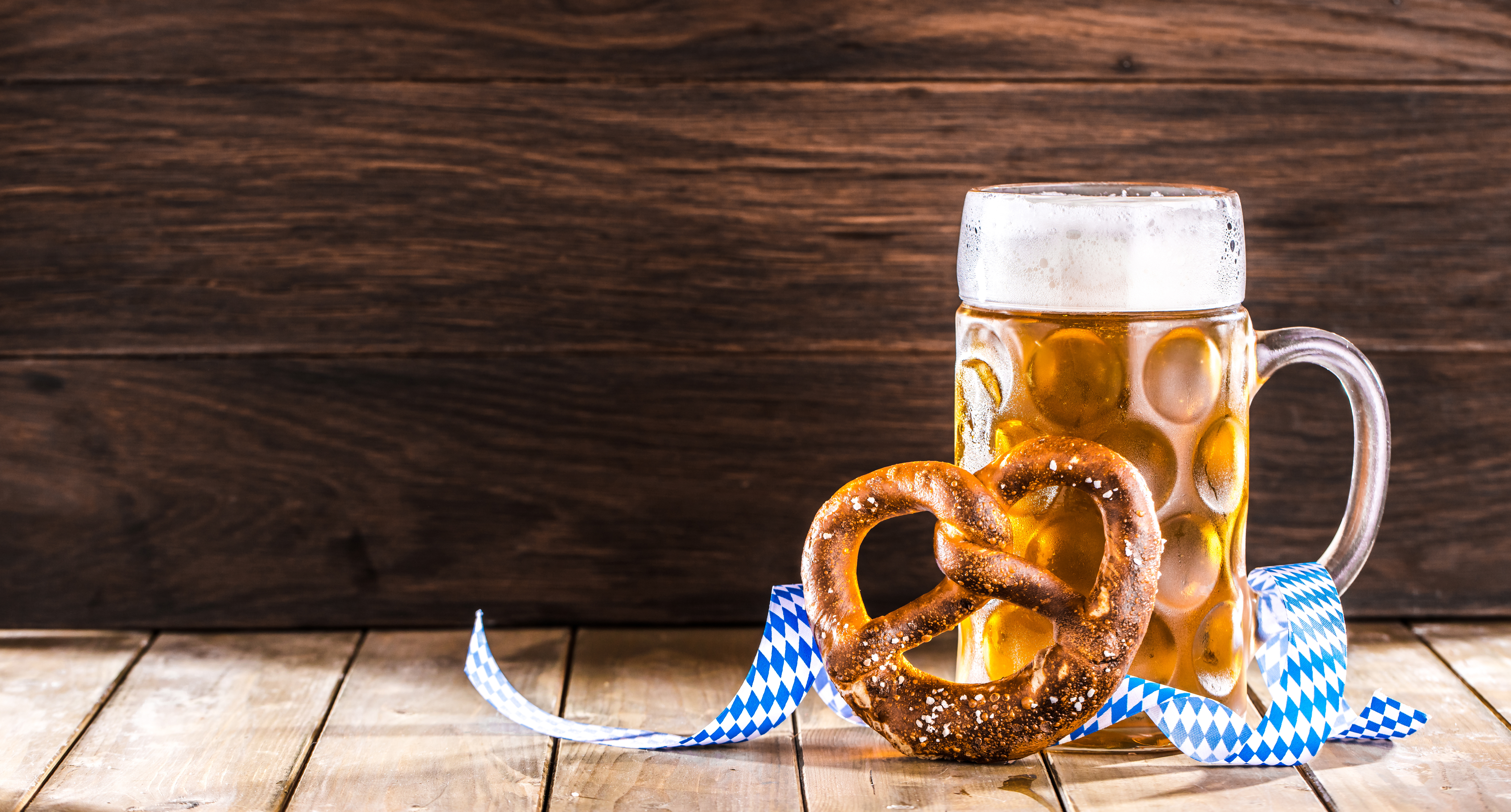Germany’s Oktoberfest: targeting tradition
The original Oktoberfest was held in October 1810, in honour of the wedding between Crown Prince Ludwig of Bavaria and Princess Therese of Saxony-Hildburghausen. For five full days, the citizens of Munich were invited to eat, drink and be merry. In the end, everyone enjoyed it so much that it was decided that it should become a yearly event.
THE BIGGEST GERMAN FESTIVAL
Today, Oktoberfest is still mostly about being in good company, drinking beer, eating typical German or Bavarian food —such as “Bretzel” [Pretzel] or “Weißwurst”[Bavarian veal sausage]—and dancing to folk music. The beer usually comes in big beer mugs called “Maß” filled with 1 litre of beer. To get your hands on any of the aforementioned treats and delicacies, you have to nab a spot at a table inside of one of the famously large Oktoberfest tents. Reservations for tables usually go on sale a year in advance and sell out very quickly.
You’ll find “Wiesn” fans from all over the world start queuing at the venue as early as 6am in order to get a spot. Many claim the first Maß of the day — beer is sold from 10am during the week and from 9am on weekends — is worth the wait. Entrance to the Oktoberfest is generally free, but be prepared, as each beer will set you back around 10 €, and smaller quantities than a Maß are not available. If you aren’t able to get an entrance ticket to one of the tents, rest assured you can still enjoy other food, drinks, and theme-park-like attractions outside, too.
For those who can’t make it to the Bavarian capital between September 22nd and October 7th, nearly every German village and city host their own festival around this period — you can even find similarly themed events all around the world.
With Oktoberfest being the biggest event in Germany, there is always a huge target group looking for the newest Oktoberfest fashion and accessories to sport while attending these beer-filled festivities.
However, which keywords should you include to target your German audience, and what do they mean? Striking the right tone with your German-speaking target markets can really make or break seasonal marketing campaigns, especially when competition over keywords is so high.
There are a few Bavarian terms that cannot be localised into other languages, as they are very specific but still have quite a notable search volume during the Oktoberfest period and hence, would be worth including if you are looking to drive traffic to your businesses.
Here are our top 5 Oktoberfest terms and their meanings:
“O’ ZAPFT IS”
Keyword Search Volume: 6,600
This phrase literally means “It is tapped”, and is said by Munich’s mayor to mark the opening of the first beer barrel and the commencement of the drinking.
“DIE WIESN”
Keyword Search Volume: 9,900
This refers to the meadow in which Oktoberfest takes place. The “Theresienwiese” is named after Ludwig’s bride and is shortened as “Wiesn”. Some people, especially Bavarians, also use “Wiesn” as a synonym for Oktoberfest.
“DIRNDL”
Keyword Search Volume: 201,000
This is the traditional garment worn by women during the Wiesn. It also means “girl” in the Bavarian dialect. Modern Dirndls consist of a bodice (Mieder), blouse (Bluse), a skirt (Rock) and a Dirndl apron (Schürze). The position of the apron’s bow on the Dirndl (left, right, front, back) also has different meanings. For example, a women wearing her bow on the right means that she is already married or in a relationship.
“TRACHT”
Keyword Search Volume: 22,200
“Tracht” is the general term used for traditional German garments, such as Dirndl and Lederhosen.
“LEDERHOSEN”
Keyword Search Volume: 12,100
These “leather breeches” are made of real leather and are either knee-length or shorter – and traditionally worn by male Oktoberfest visitors.
If you would like to brush up on your Bavarian language skills, you could try this special Wiesn-Dictionary.
WHERE TO DRESS UP
Dirndl and Lederhosen are still compulsory, so you could be in the minority if you’re not seen wearing any of the above-mentioned items during Oktoberfest.
When it comes to buying the perfect Oktoberfest outfit, some German customers opt for more traditional, and usually local outfitters. On the other hand, more and more online shops and retailers such as Zalando offer Dirndl and Oktoberfest collections and ranges including lower-priced products as well as designer fashion.
TARGET TRADITION
In summary, very competitive bidding is expected before and during the Oktoberfest season. Using appealing, targeted terms such as “Wiesn” over broader terms such as “Oktoberfest” for German-speaking markets and not just Bavaria can increase your content’s visibility tremendously. Want to know more about how Locaria can help your keyword marketing and SEO? Find out more on our services pages today.



